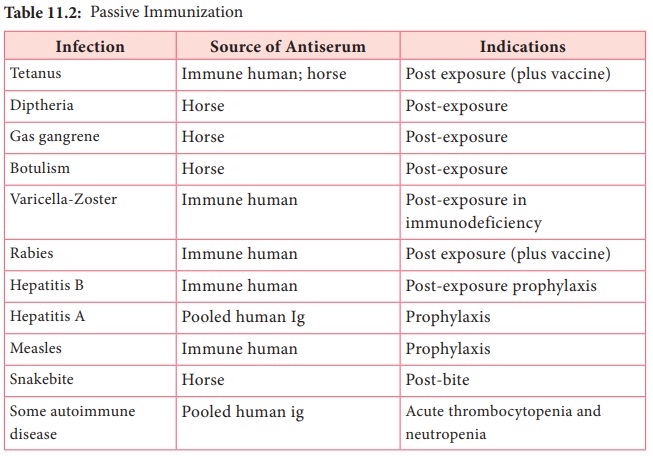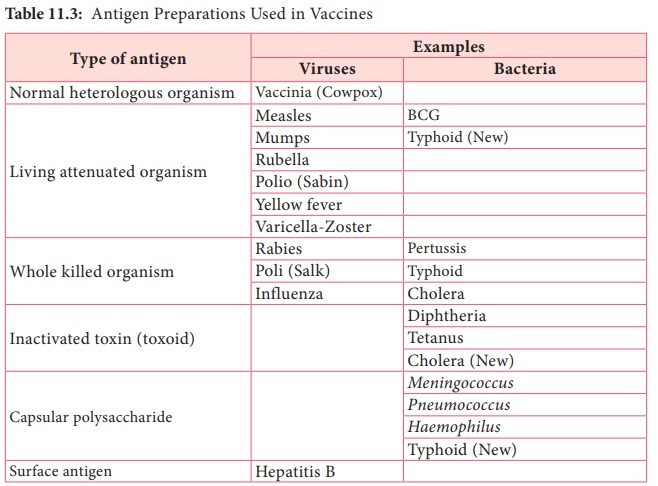Vaccine Types, Routes of Administration, Types of Immunization | Immunology - Immunization/Vaccination | 12th Microbiology : Chapter 11 : Immunology
Chapter: 12th Microbiology : Chapter 11 : Immunology
Immunization/Vaccination
Immunization/Vaccination
Father of
Immunology is Edward Jenner. He produced the vaccine for small pox from cow pox
virus. Vaccine is a substance that is introduced into the body to prevent the
disease produced by certain pathogens. Vaccines consist of dead pathogens or
live but attenuated (artificially weakened) organisms.
Immunization programmes and the development of
new vaccines play an important role in protecting individuals against illness.
Vaccination works by safely exposing individuals to a specific pathogenic
microbe, artificially increasing their immunity to it.
Vaccines are made from
• Live
micro-organisms that have been ‘treated’ so that they are weakened (attenuated)
and are unable to cause disease.
• Dead
micro-organisms.
• Some
part or product of the micro-organism that can produce an immune response
Vaccine Types
• Live
attenuated vaccines: These vaccines contain modified strains of a
pathogen that have been weakened but are able to multiply within the body and
remain antigenic enough to induce a strong immune response. Example: Oral Polio
vaccine
• Heterologous
vaccine: These are a group of
live attenuated vaccines produced from the strains that are pathogenic in
animals and not in humans. It is a vaccine that confers protective immunity
against a pathogen that shares cross-reacting antigens with the microorganisms
in the vaccine. Example: Cow pox virus that protects against small pox in
humans .
• Killed
inactivated vaccines: These groups
of vaccine are produced either by killing or inactivating the bacteria or virus
by chemical treatment or heat. Example:; Polio virus
• Sub unit vaccine: The
antigenic determinant / epitope (the
very specific part of the microbe) is used to prepare the vaccine.. DNA Vaccines: When the genes for microbe’s antigens are introduced into
the body some cells will take up the DNA. The DNA then instructs those cells to
make the antigen molecules. The cells secrete the antigens and display them on
their surfaces. The body’s own cells become vaccine generating factorie
Routes of Administration
• Deep subcutaneous
or intramuscular route – most vaccines
• Oral
route – Oral BCG vaccine
• Intradermal
route – BCG vaccine
• Scarification
– Small pox vaccine
• Intranasal
route – Live attenuated influenza virus
Types of Immunization
Immunization
is of two types:
1. Passive
Immunization
2. Active
Immunization
1. Passive Immunization
• Passive
immunization is produced without challenging the immune system of the body. It
is done by administration of serum or gamma globulins from a person who is
already immunized to a non- immune person.
• Passive
immunization is the administration of preformed antibodies either intravenously
or intramuscularly.
• It is
used to provide rapid protection in certain infections such as diphtheria or
tetanus or in the event of accidental exposure to certain pathogens such as
hepatitis B.
• It is
also used to provide protection in immune compromised individuals.
Passive natural immunization - acquired
from the mother before and after birth. Before birth, immunity is transferred
from mother to the fetus in the form of maternal antibodies through placenta.
After birth, the antibodies (Ig A) are transferred through breast milk (Table
11.2).

Passive artificial immunization - developed by injecting previously
prepared antibodies using serum from humans or animals. This type of immunity
is useful for providing immediate protection against acute infections like
tetanus, measles etc.
2. Active Immunization
Active
immunization is the administration of vaccines containing microbial products
with or without adjuvants in order to obtain long term immunological protection
against the offending microbe.
At
present the normal route of vaccination in most instances is either
intramuscular or subcutaneous.
Oral
immunization is the method of choice for polio and Salmonella typhi vaccines.
However, there is an increasing
awareness that this route of immunization may be the best for most
immunizations since nearly all infectious agents gain entrance through the
mucosal surfaces.
Active
natural immunization involves activation of immune system in the body to
produce antibodies. It is achieved in both clinical and subclinical infections.
Active
artificial immunization is achieved by the administration of vaccines or
toxoids.
Antigen preparations
Most
vaccines consist of attenuated organisms, killed organisms, inactivated toxins,
or sub cellular fragments and more recently genes for antigens in viral
‘vectors’, and DNA itself. Thus, vaccines must be capable of targeting the
immune system appropriately i.e. cellular/or humoral mechanisms (Table 11.3).

Adjuvants
Nonliving
vaccines, especially those consisting of small molecules require the inclusion
of agents to enhance their effectiveness.
These
adjuvants include microbial, synthetic and endogenous preparations having
adjuvant activity, but at present only aluminium or calcium salts are generally
used in humans.
Adjuvants
should enable antigens to be slowly released, preserve antigen integrity,
target antigen presenting cells and induce cytotoxic lymphocytes.
Related Topics